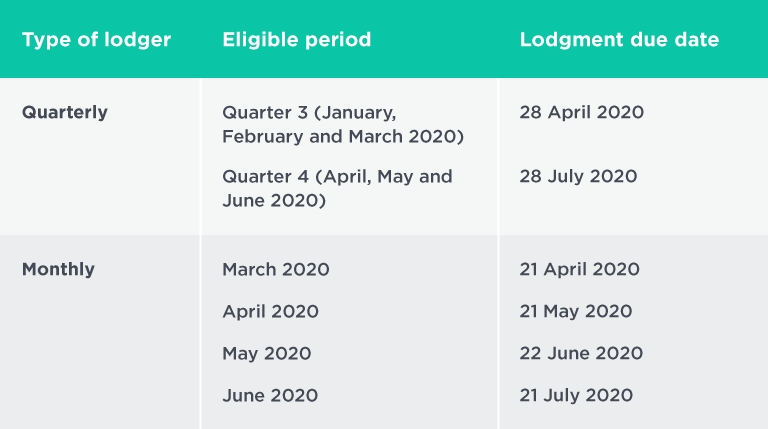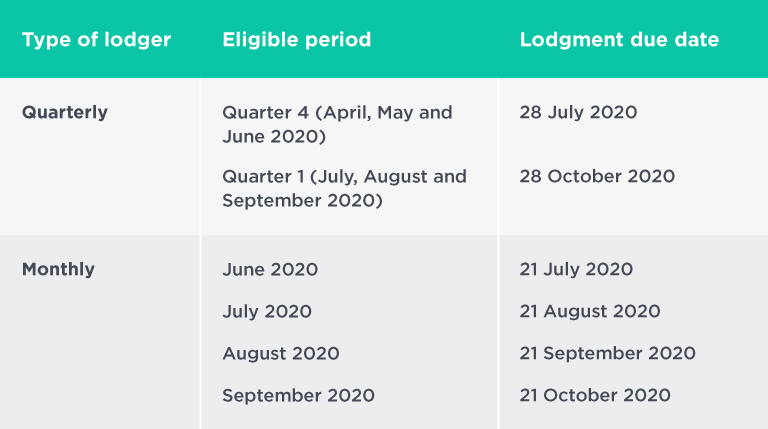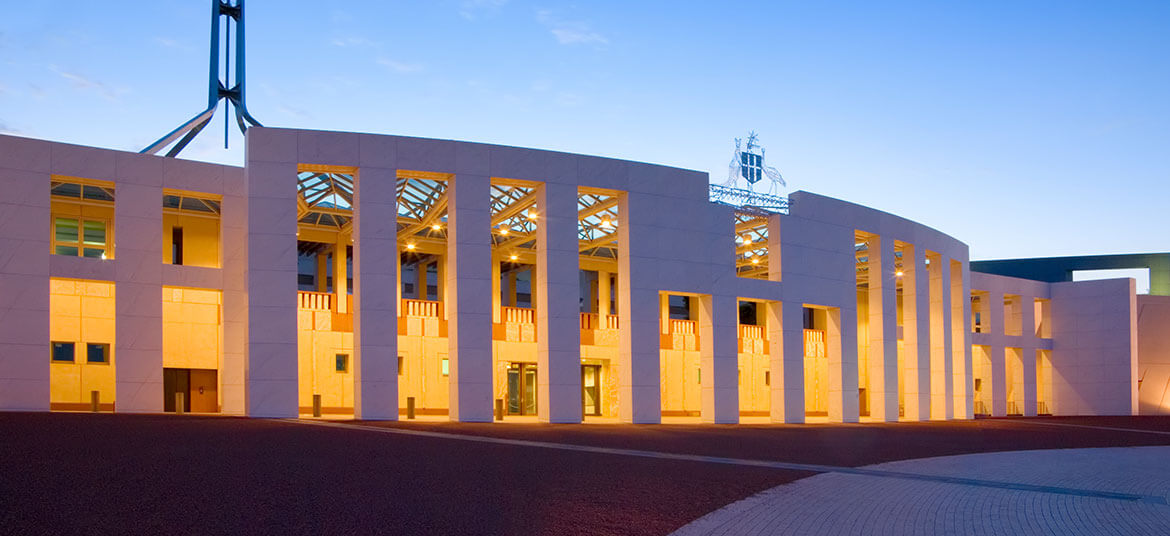The Australian Government has unveiled a coronavirus economic stimulus package worth $189 billion. Here's what Australian SMEs need to know.
As best as we all can, we’re stepping up to the plate. In March 2020, the Australian Government unveiled a coronavirus economic stimulus package totalling $189 billion to support affected individuals, businesses, and the broader community.
The Australian Treasury has estimated that the coronavirus (COVID-19) pandemic will decrease Gross Domestic Product (GDP) by 0.5 per cent in the March quarter. In addition, Citibank has revised its average Australian GDP forecast for the year down to 1 per cent, and Goldman Sachs is anticipating a double-digit hit to Australia’s economic growth for the June quarter. Being economic forecasts, it should be noted, all of these figures are subject to change.
However, these figures do highlight the big picture impact of COVID-19, which is presenting small businesses with a number of challenges.
Here’s a run-down of all the things SME owners need to know to navigate these unchartered waters, as well as a checklist of questions to ask yourself to help prepare.
Softening the impact of forced shutdowns
As part of Stage 1 restrictions, the Australian Government instructed bars, casinos, clubs, pubs, and licensed venues in hotels to shut up shop at midday Tuesday 23 March 2020. Similarly, cafes and restaurants were forced to close their doors to patrons too, restricted to home delivery or takeaway orders only.
At the same time, cinemas, entertainment venues, gyms, and indoor sporting facilities were instructed to close their doors, and places of worship too.
The Australian Government has also placed restrictions on the number of people who can attend weddings and funerals.
From midnight Wednesday 25 March, further Stage 2 restrictions come into effect.
Food courts in shopping centres will be restricted to takeaway, as cafes and restaurants already were. Health and fitness facilities will be forced to close, with boot camps and personal training sessions limited to a maximum of 10 people working out at an appropriate distance. Beauty therapy, tanning, waxing, nail salons and tattoo parlours will be shutting up shop for the time being.
In the public sector, galleries, museums, national institutions, historic sites, libraries, community centres, nonessential facilities, community facilities such as halls will also be closing.
If your business doesn’t appear on the ‘no-go’ list, you can continue to operate, respectfully, at a distance. No handshakes. If you can work from home, all the better, as social distancing is critical to nipping the spread of COVID-19.
That means, it’s systems ‘go’ for many SMEs, however, most likely ‘not so fast’. This isn’t ‘business as usual’.
Balancing supply and demand amid closing borders
Whether you’re importing or exporting, or trying to simply travel from A to B, COVID-19 takes no prisoners.
Businesses importing products from overseas may experience disruptions in supply as factories are closed or operating at reduced capacity. While Chinese industry has bounced back, production is low and slow at most major European and US manufacturing hubs.
On that note, small and medium-sized businesses may see reduced demand from export markets. As an example, at the pointy end, Australian wine businesses exporting to China reported a 90 per cent drop in sales in the first two months of 2020. That’s a first-order effect, but there are always flow-on impacts seen in other industries.
How much demand dries up, and for how long, will vary on a case by case basis. In some industries, it’s easier to determine. With Australia’s borders effectively closed, and the Australian Government advising against non-essential travel across the nation, that means travel and tourism operators have their share of tough days ahead.
This time last year Australia was counting around 60,000 to 70,000 tourism arrivals daily. Before the ban, as COVID-19 continued to develop, this figure had fallen to 30,000. We’ve now seen that grind to a halt. From education to hospitality, this marks another hit on consumption and Australia’s many tourism-driven industries.
From Tuesday 24 March, four of Australia’s states and territories had closed their borders. Tasmania and Northern Territory led the charge, followed by South Australia and Western Australia, with QLD soon to follow suit. As it stands now, returning residents to those states and territories must begin 14 days of self-quarantine upon arrival. This follows the pre-existing 14-day self-quarantine requirement for anyone entering Australia from overseas.
Victoria and NSW still have open, yet tightly regulated, borders. This is a matter of population, logistics and feasibility, considering the many border towns dotted along the Murray River.
With movement restricted as a preventative measure, no matter how you cut it, economies around the world will slow. Speed and duration is a separate question.
The Australian Government has prepared a bumper stimulus to help businesses with the onset of the coronavirus slowdown. What’s available to you, as an Aussie SME? Glad you asked. Consider this your little (big) cheat sheet.
Stimulus for SMEs
- Increasing cash flow assistance up to $100,000 to help small businesses continue paying wages
- Wage subsidies for eligible employers of trainees and apprentices
- Income support for sole traders and the self-employed
- Early access to superannuation
- Temporary relief for financially distressed businesses, including changes to insolvency laws

Upping cash flow assistance for SMEs
The Australian Government will provide at least $20,000 per eligible SME, up to a maximum of $100,000. This will help SMEs manage cash flow and retain employees, while ensuring a healthy pipeline of skilled workers. Aggregated annual turnover under $50 million, employees on the books, and establishment prior to 12 March 2020 are the key eligibility criteria here. How much you receive will depend on the size of your business.
The measure, labelled Boosting Cash Flow for Employers, is one of the biggest government hand-outs for SMEs yet. It should benefit around 690,000 businesses employing around 7.8 million people.
So, how will it pan out? Under the newly revised scheme, employers will receive a payment equal to 100 per cent of their salary and wages withheld (up from 50 per cent), with the maximum payment being increased from $25,000 to $50,000. In addition, the minimum payment is being increased from $2,000 to $10,000.
Essentially, consider this a doubling of the limits the Australian Government announced on 12 March 2020 as part of its first coronavirus stimulus package. Yes, this is a doubling down of the Boosting Cash Flow for Employers scheme, the small business bedrock of the government’s first coronavirus stimulus package.
Now, an additional payment has been introduced for the July-October 2020 period. No extra legwork required. The payment is automatically calculated by the Australian Taxation Office (ATO).
If you stand eligible, a gentle reminder below of the dates to note as per the ATO business activities lodgment schedule. Whether these dates look familiar may depend on whether you’re a quarterly or monthly lodger:

Depending on your eligibility, upon lodging your business activity statement (BAS), the ATO will make a payment to you as a credit. If that places you in a refund position, the ATO will deliver your refund within 14 days.
That’s what you can expect in terms of timing for the first payment.
Now, that second payment, announced on 22 March 2020, as part of the second coronavirus stimulus package.
Rolling into the second Boosting Cash Flow for Employers payment, eligible traders should remember the following dates:

Remember the payment limits. Each additional payment corresponding to those dates will be equal to half of your total initial Boosting Cash Flow for Employers payment (up to a total of $50,000) for quarterly lodgers, or one-quarter for monthly lodgers (also up to a total of $50,000).
Keeping the trainee wheels spinning
Eligible employers training up apprentices and trainees may also apply for a wage subsidy. This will be equal to 50 per cent of their apprentice/trainee wages paid during the 9 months from 1 January 2020 to 30 September 2020. If you’re unable to retain your apprentices and trainees, the subsidy will become available to another employer.
Employers will be reimbursed up to a maximum of $21,000 per eligible apprentice or trainee, or $7,000 per quarter.
You’ll be able to exercise this subsidy if you employ fewer than 20 full-time employees and currently retain an apprentice or trainee. They must have been with your business since 1 March 2020.
This measure specifically will support up to 70,000 small businesses, employing around 117,000 apprentices. Registration will open from early April 2020, with eligible businesses being able to claim the subsidy through 31 December 2020.
Supporting sole traders and the self-employed
The JobSeeker Payment (formerly Newstart) will become available to casual workers, contract workers, sole traders, and the self-employed who lose work through COVID-19. The JobSeeker payment will become available to impacted Australian citizens and residents aged between 22 and 66. Asset testing will be waived, including the Liquid Asset Test Waiting Period (LAWP). These changes will apply for the next six months.
In the case of sole traders and the self-employed, applicants will make a declaration that their business has been suspended or seen a significant reduction in turnover. To qualify, it seems your income can’t exceed more than $1075 per fortnight, and your partner can’t earn more than $48,000. This has been flagged as having potential to change. (We’ll keep you posted, we’re still waiting to get the full ins and outs of this one.)
In any case, this coronavirus supplement will be paid at a rate of $550 per fortnight. It will apply for six months from April 27.
That means, if you’re running a small business as a self-employed person and your work dries up in the fallout of COVID-19, your income floor is $550 per fortnight. Even if you have assets. No waiting periods, with the process now also effectively streamlined online. This is a tax-free supplement.
Other payments are also set to increase by $550 per fortnight, including youth allowance, parenting payment (partnered and single), Austudy, Abstudy, farm household allowance, and special benefit.
Superannuation at super speed
In a tricky manoeuvre, the Australian Government will grant early access to superannuation to those who need the extra funds. Whether you’re 30 or 60, from mid-April, you may better have the ability to unlock your superannuation fund.
Eligible individuals will be able to apply online through myGov to access up to $10,000 of their superannuation before 1 July 2020. Eligible individuals will also be able to access up to a further $10,000 from 1 July 2020 for approximately three months (exact timing will depend on the passage of the relevant legislation). This is a tax-free supplement.
If you’re considering this, make sure you consult with your financial adviser first. Separate arrangements apply if you have a SMSF and guidance is available on the ATO website.
To apply for early release you must satisfy any one or more of the following requirements:
- You are unemployed; or
- You are eligible to receive a job seeker payment, youth allowance for jobseekers, parenting payment (which includes the single and partnered payments), special benefit or farm household allowance; or
- On or after 1 January 2020:
- You were made redundant; or
- Your working hours were reduced by 20 per cent or more; or
- If you are a sole trader — your business was suspended or there was a reduction in your turnover of 20 per cent or more
Relaxing corporate insolvency laws
Thresholds are changing to give SMEs a better chance at navigating testing times.
Severely affected SMEs, and Australian companies in general, may breathe a little easier knowing the corporations law is temporarily changing.
We’ll see an increase in the threshold at which creditors can issue a statutory demand on a company (from $2,000 to $20,000) and the time that companies have to respond to statutory demands they receive (from 21 days to six months).
In addition, an increase in the threshold for a creditor to initiate bankruptcy proceedings (from $5,000 to $20,000), an increase in the time period for debtors to respond to a bankruptcy notice, and extending the period of protection that a debtor receives after making a declaration of intention to present a debtor’s petition (from 21 days to six months).
Creditors, many of whom are themselves small businesses, will still have the right to enforce debt against companies or individuals through the courts.
Everything outlined above marks a temporary change. Increases to the thresholds will apply for the next six months. Company directors will also be relieved of their duty to prevent insolvent trading over the next half-year.
Taking a second look at the first stimulus
That’s a comprehensive, but no means exhaustive, round-up of what’s on offer to Australian businesses through the coronavirus stimulus package. Here are a couple more items, announced in the first stimulus, that may be worth another look:
- Increasing the instant asset write-off. Lifting the threshold to $150,000 (from $30,000) — and making more businesses eligible to use it (in effect until 30 December 2020). Update: The threshold has been removed, so there is no limit to the asset value. This is in effect until 30 June 2022.
- Backing business investment. Offering businesses a time-limited incentive to invest, by accelerating depreciation deductions (until 30 June 2021).
Asking tough questions
Supply chain disruptions, lower demand for Australian exports, and changes in consumer, employee and supplier behaviour all have the potential to put a real dent in SME revenue and cash flow.
Some good questions to ask yourself:
- Is your business set up to enable staff to work remotely if needed?
- Do you have a business continuity plan (BCP) in place and can this effectively mitigate risk?
- What will happen if a large number of employees are infected with the virus at one time?
- Do you have alternative supply options if existing suppliers can’t deliver your required products and services?
- Do you have SME payments solutions in place?
- Is your business susceptible to changes in consumer behaviour?
- How might these changes impact your business?
- Do you have alternative ways of selling your products or services?
If market analysts do it, you may like to think up your very own bull, base and bear case scenarios based on the coronavirus and how it may impact your financial results. Look at the critical variables that affect your revenue and costs.
For example, how would a 20 per cent decrease in your revenues impact your cash flow, profit and loss statement, and balance sheet? Creating a cash flow statement for different scenarios will show you the potential financial impacts on your business. Consider what non-essential business costs can be reduced or entirely eliminated during a slowdown. Here are 10 ways to cut small business costs.
It won’t always be easy. As Prime Minister Scott Morrison said: ”It is bigger than premiers, chief ministers, captains of industry, leaders of union movements, it is bigger than all of us.”
Choice words. In tough times, when the world seems to be shrinking, it’s harder for small businesses to think big. It may help to know that you’ve got people standing ready to support you.
Finally, here’s where you can learn more and find out if you’re eligible for assistance from the Federal Government.




